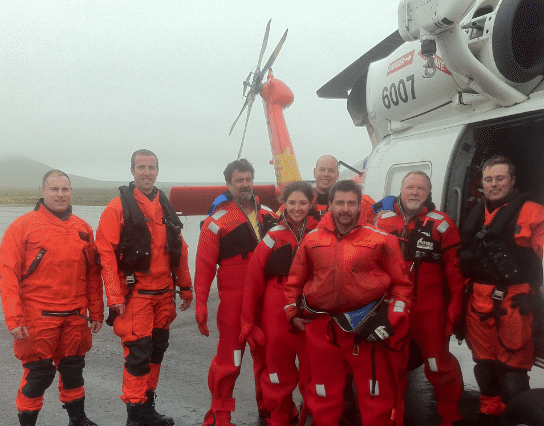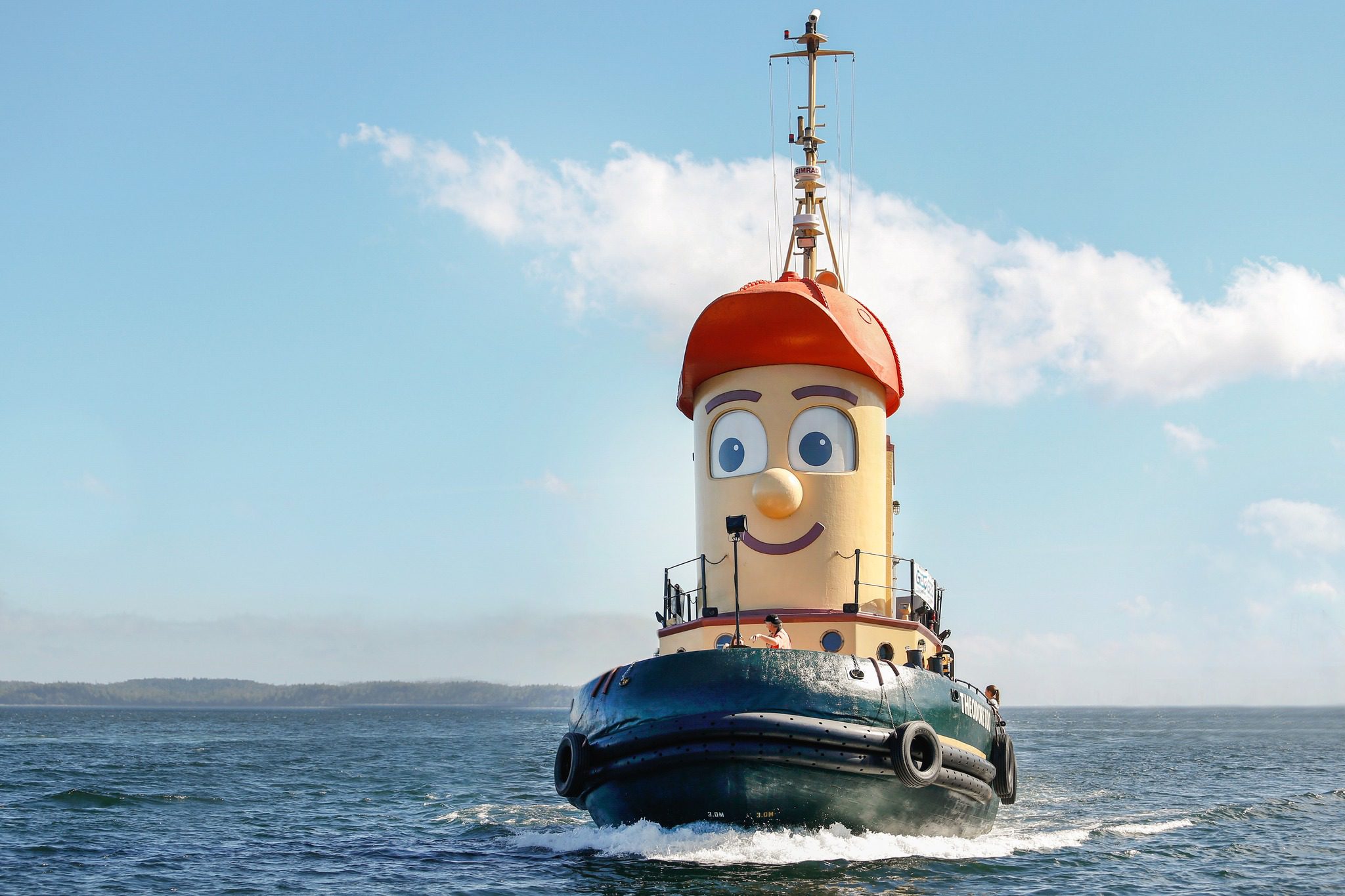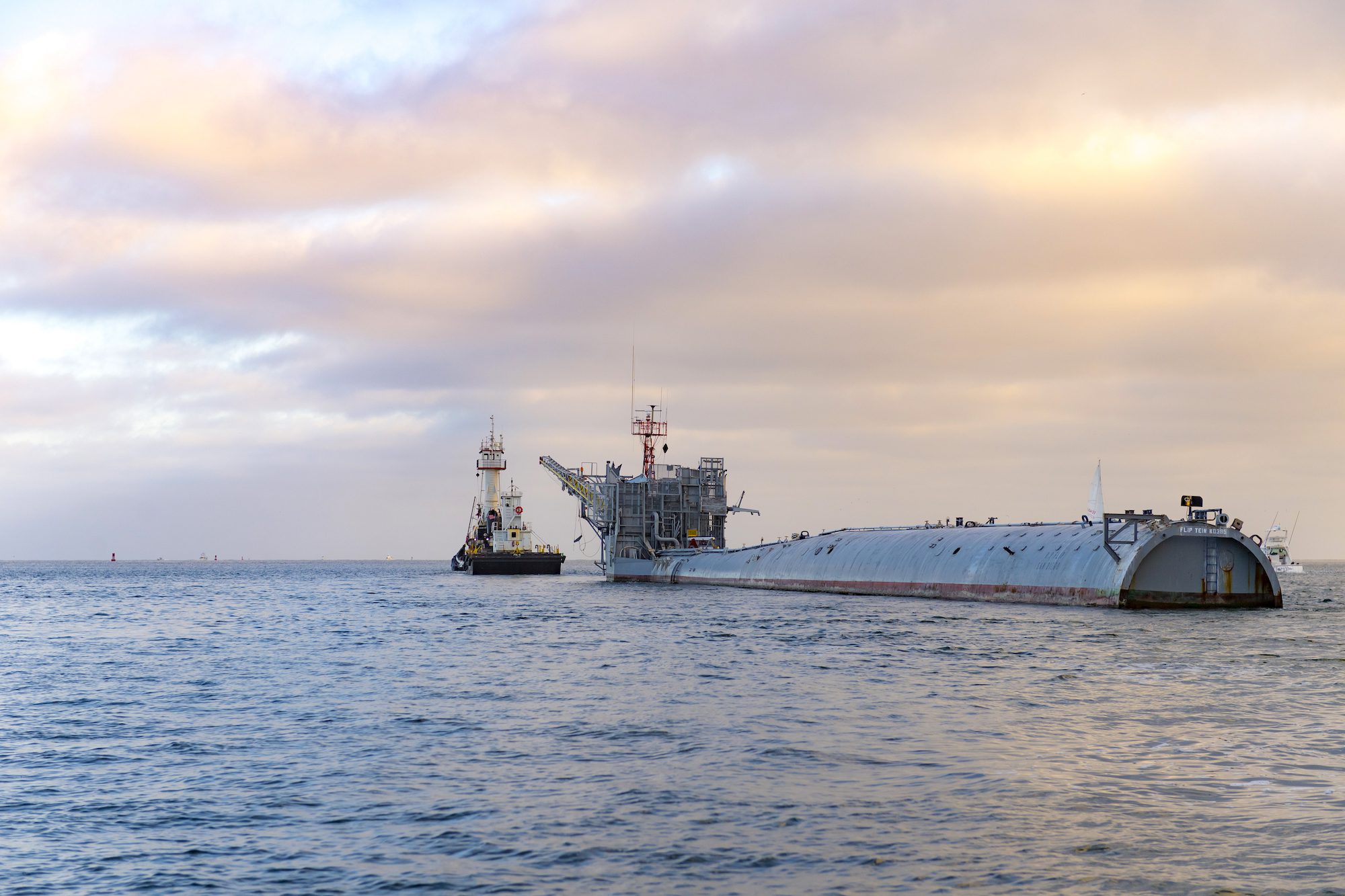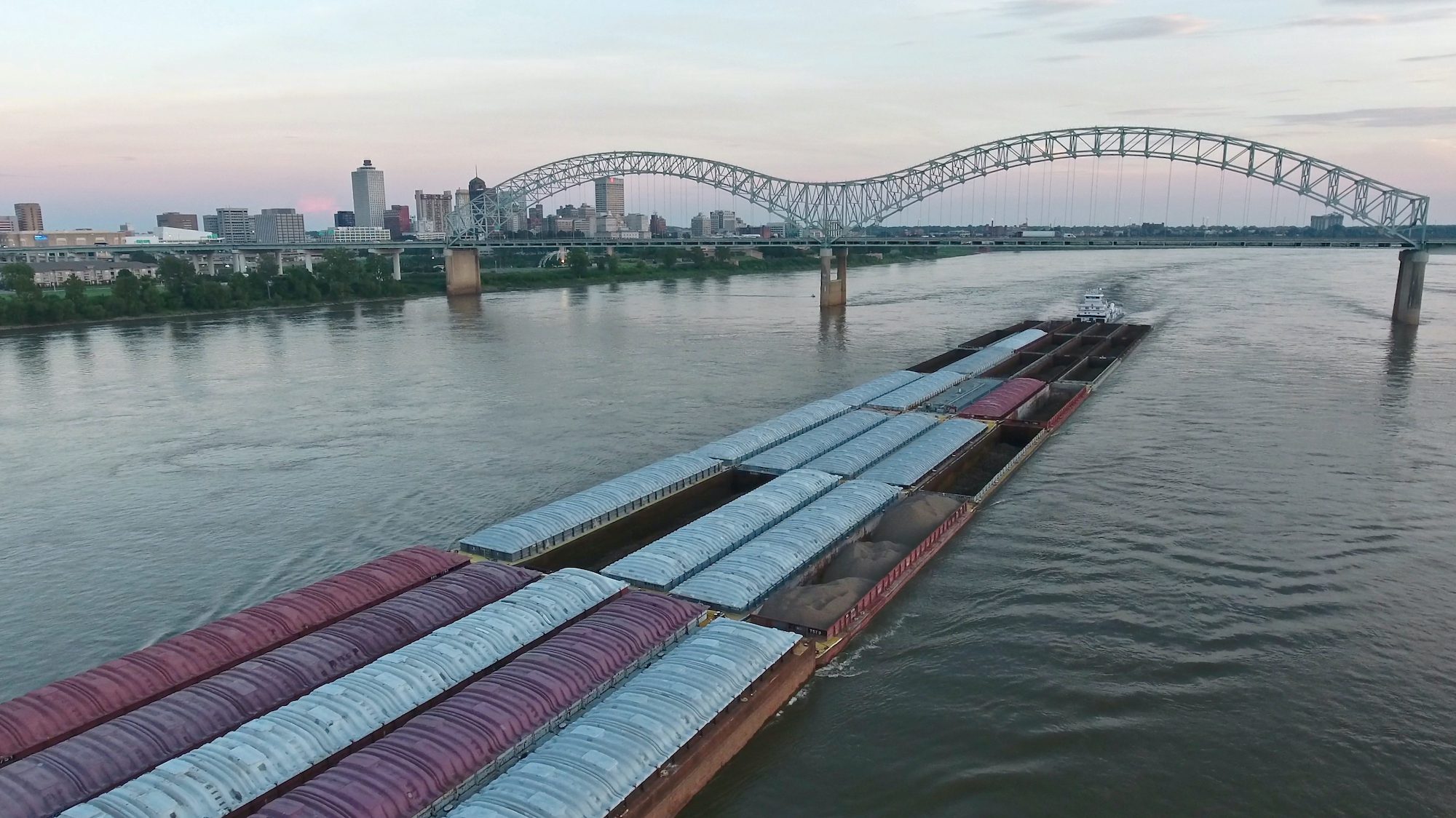
U.S. Coast Guard photo
By Doug Pine
I recently took a temporary job as master of the tug Aries with a freight barge from Seward to Chignik, Alaska then light boat to Dutch Harbor where I grabbed another freight barge and was to take it to Nome. We got as far as a position approximately 102 nm ESE of St. Paul Island in the Bering Sea. What follows is the story of the morning of Sunday 26 June 2011. This narrative is dedicated to my crew: Mate Drew Williams, Engineer Scott Wilson, and AB Jasmine Abovian.
I joined the tug in Seward, and at 0001 on a Saturday morning we left for Chignik towing the barge KRS 200-10 loaded with various whatnots for that village and others. Along the way we handed off the barge to the tug Blarney and stuck around to assist them onto and off of the beach near Brown’s Point. Once released, we headed light boat for Dutch Harbor and arrived there after an uneventful yet stunningly beautiful passage. I love summer in Western Alaska!
The day before my Mate and new BFF Drew Williams arrived, the previous Mate went home. Just after he left, Dutch Harbor cleared out in a hurry due to a tsunami warning issued as the result of a 7.5 magnitude quake 80 nm east of us. Scott, Jasmine and I lit off the mains, tossed the lines, and hightailed it out to sea, followed by (and soon overtaken by) the tug Gyrfalcon, the Alaska Oceans and several others I didn’t catch the names of. Because we left at 1950 and the tsunami was scheduled to arrive at Dutch at 2028, I decided we would suit up just in case. We donned our nice, brand new immersion suits and headed out, calling the owner and our families and friends to let them know we were going to be fine in case they heard some sensationalized coverage of the tsunami that ate Dutch Harbor. Nine miles out, the tsunami warning was cancelled and we decided to run over to Captains Bay and inspect the barge that was tied up to a mooring in preparation for our departure. We went over and took a look at the KRS 240-5 barge, a nice deck barge loaded with $15,000,000.00 of brand new heavy equipment, trucks, a manufactured building, containers, asphalt machines, etc that were already quite late getting to their destination. We had to figure out a way to make tow because the tug had no capstan on the stern and so it was going to be a creative endeavor. We did a drill or two, and Jasmine got some stick time in learning how to handle the tug. Around 2300 we returned to the Hotel Side at Delta Western and went to bed.
The next afternoon, Friday 24 June, Drew arrived. I walked over to the airport to meet him and we made our way to the tug. He went shopping for some stuff and later on that evening we headed over to the barge again. We made tow by paying out a couple hundred feet of wire (the winch was loaded up and we couldn’t roll the D around) then grabbed the swede wire and rolled it up until the gear was on board. Once the gear was
secured we rolled the swede wire off, hauled back the wire, and made tow. We don’t need no steenking capstans.
By this time it was somewheres around 2100. On a Friday. We’ve got no legitimate reason not to get underway but all of us subscribe to the superstition. A call from the owner, who had suffered enough already due to circumstances entirely out of his control, melted my superstitious heart and the decision was made to get moving before midnight. Right then, as a matter of fact.
I will never, ever, get underway on a Friday again. Just not gonna do it.
Underway at 2115, I settled into the chair leaving Captains Bay on a mirror-like ocean, in light fog.
The next 24 hours were spent monitoring a 976 mb low that was going to dive south while still west of us, meaning we were going to have SE’ly winds of 25 – 30 knots and 6 – 8 foot quartering seas. Nice on the flood, kinda sucky on the ebb. While small (68 feet), the tug rode very comfortable and was easy to trim. The watches went uneventfully until 0530 Sunday 26 June. I had woken up at 0430 and lounged in my rack watching an episode of “Deadwood” to get my tough-guy mojo working. At 0530 I went up and relieved Drew and Jasmine. The mid watch had been uneventful. Scott and I now being on watch, began our day in the routine of a sea voyage. Coffee, stretching, yawning, plotting a position, all that fun stuff. The nice quiet morning lasted for three minutes, and then the boat, which had been rolling quite as one would expect her to do in a quartering sea, rolled fifteen degrees to starboard and didn’t come back. Huh. That ain’t right. So I hopped below and woke Drew up. “Come on up here, Drew. I need your professional opinion”. He went up, I continued below. Told Scott to go to the basement and start pumping ballast our of the starboard after tanks and to move fuel to port. On my way back to the pilothouse I peeked in on Jasmine and told her to stay awake for a while because I might need her help.
Once back in the pilothouse, Drew reported that the entire starboard quarter was under water and he could see just the top of the H-bitt poking above the surface. The list was increasing and was nearing 25 degrees. I told Drew to go get the liferaft ready, and got Jasmine to grab hers and Scott’s immersion suits and come to the pilothouse. Drew poked his head into the pilothouse and said “Hey Doug that barge looks a hell of a lot more comfortable than this liferaft” and I naturally agreed. I had been playing the “what if” game my students are so familiar with me preaching just the day before, and envisioned abandoning the tug for the barge in the event the event that was now a serious event.
Maneuvering a tug in eight to ten foot seas while holding a 30-45 degree list isn’t for the faint of heart. I was unable to come to port, because using port rudder would have driven the starboard quarter deeper into the water. In order to get to the barge, I had to come almost 90 degrees to starboard, which meant turning through the trough. I was worried that the pins (2” galvanized pipe stuck in holes) or the hold-down would fail and the wire would snap to the drum and roll us. So I crossed my fingers and went for it. The weak
points in the equation held, and I was able to make it to the barge. I came alongside port side to the port side of the barge, near midships. I was actually hoping to come in at a ninety and push, as the tug was equipped with push knees and a nice ladder that would have made it very easy to cross over. But of course, that was too easy and so I wasn’t able to convince Aries to bend to my will. Instead, we came alongside flat at 30 to 45 degrees of heel, and the lower end of the port side push knee was banging the side of the barge and holding the bow off. We later learned that we had holed the barge with the push knee, and probably with the chine as well. Being wrapped in rubber doesn’t help much with that amount of list on.
As I was holding the tug against the barge, I looked over and saw that Drew had gotten across. Shortly thereafter, Jasmine and Scott were safely aboard. Now it was my turn, and that presented a real challenge. If I took the tug to all stop, the barge would quickly blow away from her (and me). But having no choice in the matter, I did just that. All stop, center the rudder, and climb out of the pilothouse. I tossed the life ring over the side in case I wound up swimming, made my way down the forward ladder, worked around to and stood on the spring bitt, and got ready to swim. Surprising me (and the crew, I’m sure), the tug surged toward the barge one last time and I was able to get across. I grabbed a hinged D-ring atop a hatch cover and Drew and Scott heaved my (not) girlish figure up and onto the barge.
We climbed into a nice brand-new truck, fired up the engine, and cranked the heater. We smiled at each other, and marveled at the interesting turn the day had taken. Then I noticed that I had my iPhone on my shirt pocket. Wow, I thought, what a cool video for a class of new mates at PMI! So out I hopped, and started shooting video. I got video and still pics of the tug in the last twenty minutes of her service to us, and then video of her sinking to the place where she began serving as our anchor. Once she was on the bottom, the barge soon fetched up and my iNavX iPhone app told me that we were making 0.0 knots, riding comfortably 250 feet above the mud.
We knew the USCG was on the way, and so we began poking around looking for water and (hopefully) breakfast. We found water but no easily accessible food. No problem. The only one of us who might actually need any food was Scott, as the rest of us are true Americans and so carry a bit of our patriotism around our waists. Reserves, we called it.
During my exploration, I found, to my surprise, an Aircraft band handheld radio. How cool was that? Very. As soon as the C-130 was overhead I was on the radio with them and it was very nice to be able to hear that they were going to drop us a care package. Which they did do, only it was a bad shot and they missed. The spare they said they’d drop next turned into a “I guess we don’t have a spare” but that was no big deal, there were a few fish boats on their way to us so we knew we’d be ok. The helo was still three hours out. Both the Hercules and the Jayhawk had to come from Kodiak, as there is no longer a permanent USCG presence on St. Paul since the brilliant decision was made to turn off our only reliable terrestrial based positioning system. Remember LORAN?
While in the truck, my crew noticed an OnStar button and pushed it. Several times. No one answered, to our great disappointment as if they had, they would have been able to make the best OnStar commercial ever.
The rest of the day is a blur. Helo, rescue swimmer, basket, Jasmine, Scott, Drew up and away, then yours truly, then the rescue swimmer then off we flew to St. Paul.
Since the most pressing priority in the event of such an event is to let the government inspect our bodily fluids, our first stop on St. Paul was at the Health Center where Steve Milligan, the resident Physician’s Assistant and unofficial photographer for such events, facilitated that most sacred ritual of our pissing in a cup.
The good folks at the health center called up their friends and got each of us the items of clothing that we needed. Thank you people of St. Paul Island! Your generosity and hospitality will never be forgotten.
The good folks at the Trident Seafoods fish camp graciously put us up for the night and treated us to the best halibut and crab tails I have every had. Thank you, thank you, thank you Trident for your taking us in for the night. So very appreciated by us all.
The next afternoon we flew to Anchorage, and the rest is boring.
Lessons learned, you ask? Indeed.
- Bridge Team Work, in a word, works. The first line in my standing orders is “Communicate With Each Other”. Because we did, and did it well, we are alive today. When the doo-doo hit the blades, we remained a functioning and professional team. No yelling. No panic. No egos. Collaborative, supportive, caring. Sure, I was the master and had all the blah blah blah. Because I relied on the expertise of my crew I became a better master for it. I challenge all masters to consider adopting a collaborative approach to their work and using it to their advantage. It works. Period.Never again will I get underway on a Friday. Never. Fire me if you don’t like my attitude.
- Never again will I tow a barge without first ensuring that there are at least two proper heaving lines on board. One forward, one astern. If I had had to go in the water, a heaving line tossed to me would have meant a free ride to the pigeonholes. I thought about swimming for the goofball, but later that morning I noticed that it had become fouled right astern and had never properly paid out. Another fine use for a heaving line is that it is much easier to toss one downwind than to try to toss it upwind as did the dedicated crew of the “Alaskan Knight”. They came up astern of the barge and tried to pass a line across but couldn’t due to the wind. Why on earth uninspected fishing vessels carry no line throwing apparatus escapes me. “Exemptions”. Meh.
- In the future I will ask my crews to put all their important papers, money, credit cards, wedding rings (I lost mine. Well, it isn’t lost because I know exactly were it is but I can’t get it), you name it, in a dry bag and toss that sucker inside their immersion suits when the do their initial inspection. Things would have been SO much easier if we had thought of doing that.
- We, the crew of the mighty Aries, have also come up with some thoughts about immersion suit design that we will probably share with you later. Does anyone know a good patent attorney?
About Doug Pine:
Doug Pine is a mariner of 30 some years experience. He’s had his share of adventures, as do all sailors, and enjoys learning from them and passing that along to others in the industry. These days Doug works at the Pacific Maritime Institute in Seattle, where he is the Simulation, IT and Modeling manager. Which is cool,, because he loves to play with computers and stuff too. Doug is the chairman of the board of the Master of Towing Vessels Association, and a member of the International Tugmasters Association, the National Mariners Association, and the Council of American Master Mariners. He also plays one hell of a good blues riff.

 Join The Club
Join The Club











